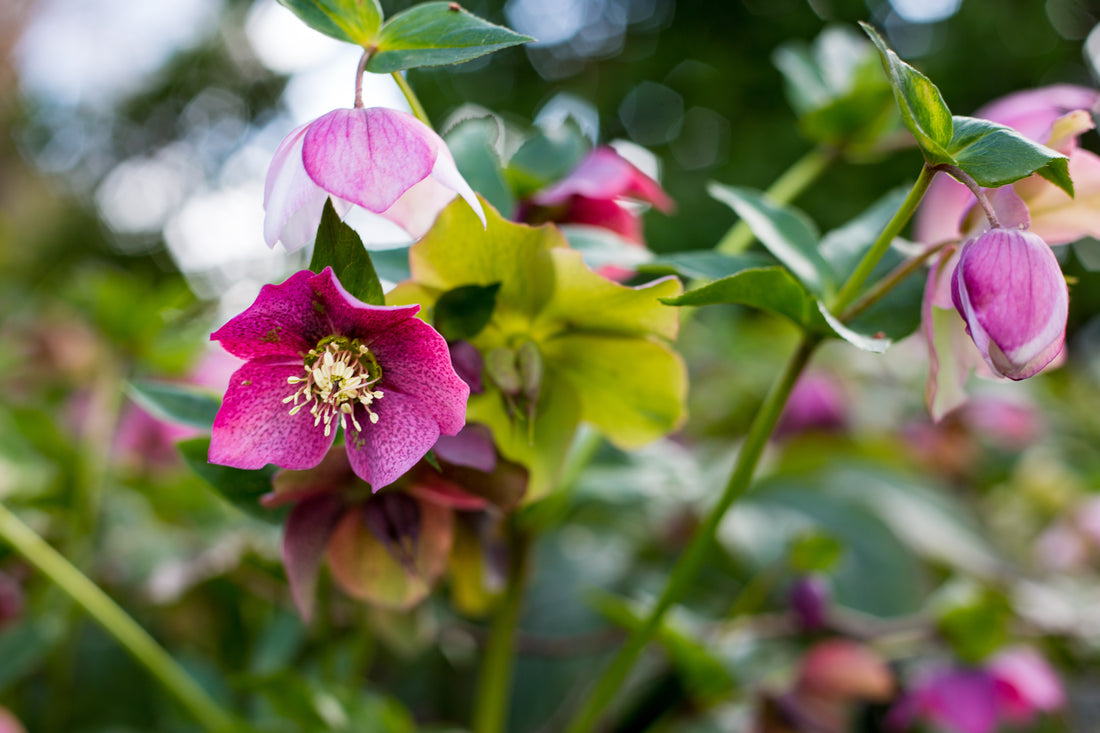Also known as the ‘Winter Rose’, the Hellebore’s distinctive flowers and attractive palmate foliage bring vibrance to the garden during an otherwise dull part of the year.
Naturally found across Europe and Asia, most Hellebores in gardens are Helleborus orientalis, and hybrids between this and other closely related varieties. The range of colours that Hellebores come in is now vast, from near black, deep purple and plum, through rich red and pinks to yellow, white and green, and sometimes with spots, stripes and bicolour petals. Hellebores have long lasting single or occasionally double flowers that last well from Winter and into early Spring – the secret being that the ‘petals’ of the Hellebore are not actually true petals but are sepals – leaves that protect the developing petals. The actual petals are the green or yellow cup-shaped structures that hold the nectar of the flower, surrounding the stamens.
Hellebores are the perfect plant for that dappled or shady spot in the garden - Need no more than a few hours of dappled light and protection from harsh Summer afternoon sun to grow successfully in shady areas. They look particularly good mass planted as a groundcover under deciduous trees or scattered throughout a woodland garden or naturally shaded area. A cool climate perennial, Hellebores are not worried in the least by frost; in the northern hemisphere, they are known to emerge while snow is still on the ground. In terms of soil, Hellebores prefer deep, moist, well-drained soil, but are adaptable to most soil types except wet clay or sandy soils. Be aware though, all parts of a Hellebore are poisonous to both humans and animals, though the extremely bitter taste is enough to put most beasties off taking more than an exploratory nibble.
Hellebores are an easy to care for and beautiful plant that will reward the gardener year after year with stunning, colourful blooms.

